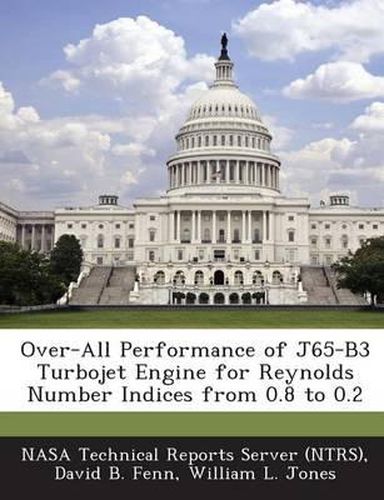Readings Newsletter
Become a Readings Member to make your shopping experience even easier.
Sign in or sign up for free!
You’re not far away from qualifying for FREE standard shipping within Australia
You’ve qualified for FREE standard shipping within Australia
The cart is loading…






The steady-state over-all performance characteristics of the J65-B3 turbojet engine were determined in an altitude test chamber for four exhaust-nozzle areas at Reynolds number indices of 0.8, 0.4, and 0.2. This range of Reynolds number indices corresponds to a range of altitudes from about sea level to 51,500 feet at a flight Mach number of 0.8. Generalized data are presented to allow calculation of engine performance at any flight condition corresponding to a Reynolds number index within the range investigated. Engine performance calculated from these generalized data is presented for seven altitudes over a range of flight speeds from zero to about 1100 knots. The use of an exhaust nozzle sized to give rated perforce at sea level would permit operation near the point of minimum specific fuel consumption for a wide range of flight conditions and engine speeds.
$9.00 standard shipping within Australia
FREE standard shipping within Australia for orders over $100.00
Express & International shipping calculated at checkout
Stock availability can be subject to change without notice. We recommend calling the shop or contacting our online team to check availability of low stock items. Please see our Shopping Online page for more details.
The steady-state over-all performance characteristics of the J65-B3 turbojet engine were determined in an altitude test chamber for four exhaust-nozzle areas at Reynolds number indices of 0.8, 0.4, and 0.2. This range of Reynolds number indices corresponds to a range of altitudes from about sea level to 51,500 feet at a flight Mach number of 0.8. Generalized data are presented to allow calculation of engine performance at any flight condition corresponding to a Reynolds number index within the range investigated. Engine performance calculated from these generalized data is presented for seven altitudes over a range of flight speeds from zero to about 1100 knots. The use of an exhaust nozzle sized to give rated perforce at sea level would permit operation near the point of minimum specific fuel consumption for a wide range of flight conditions and engine speeds.